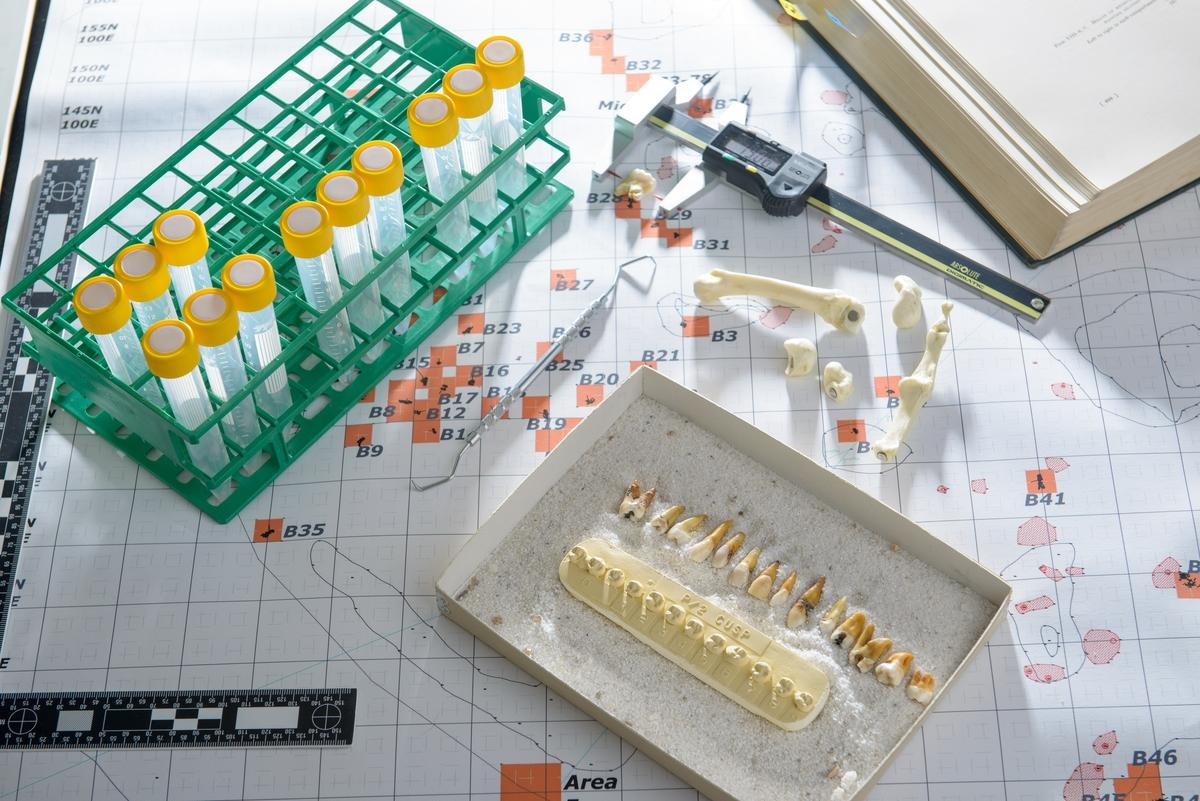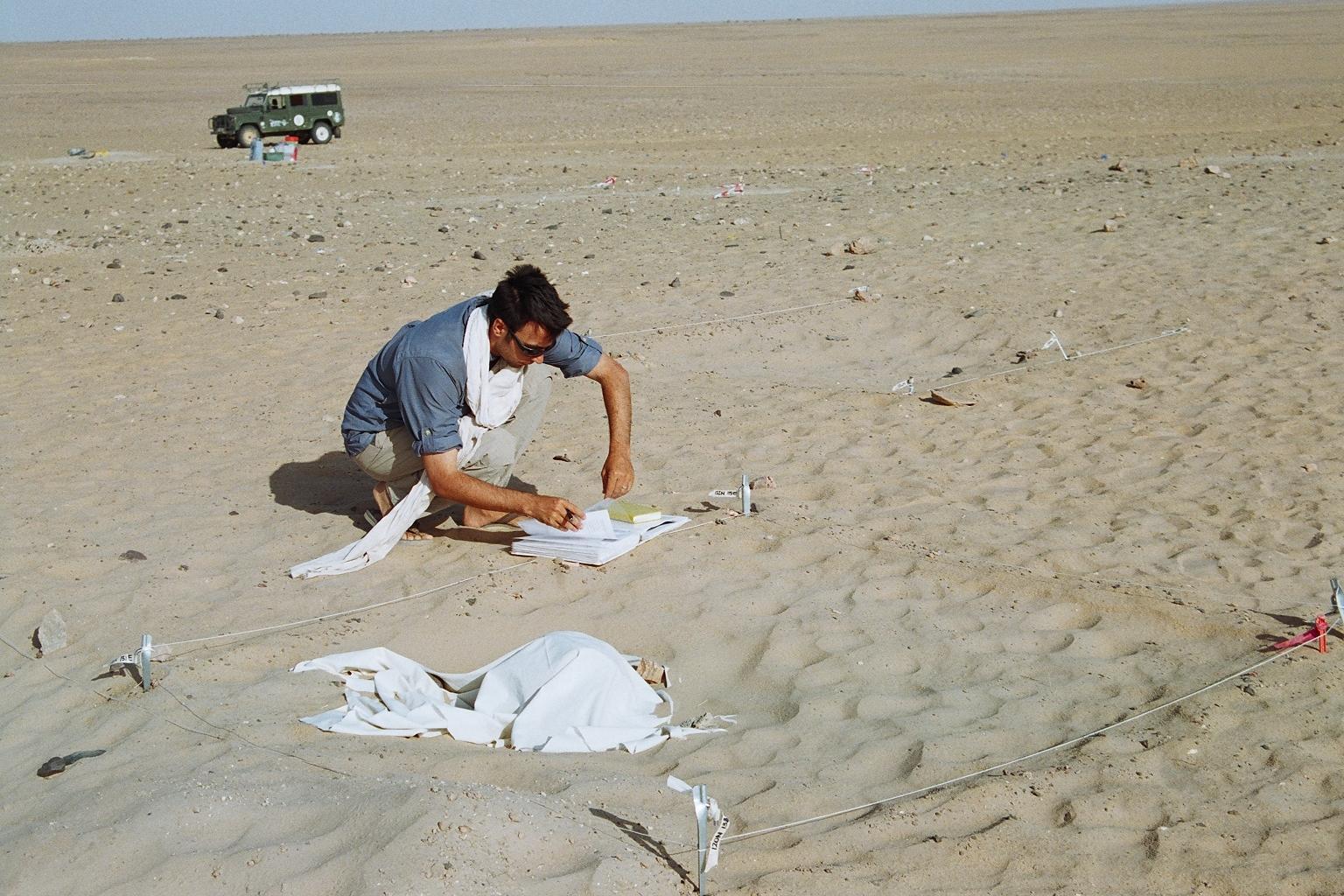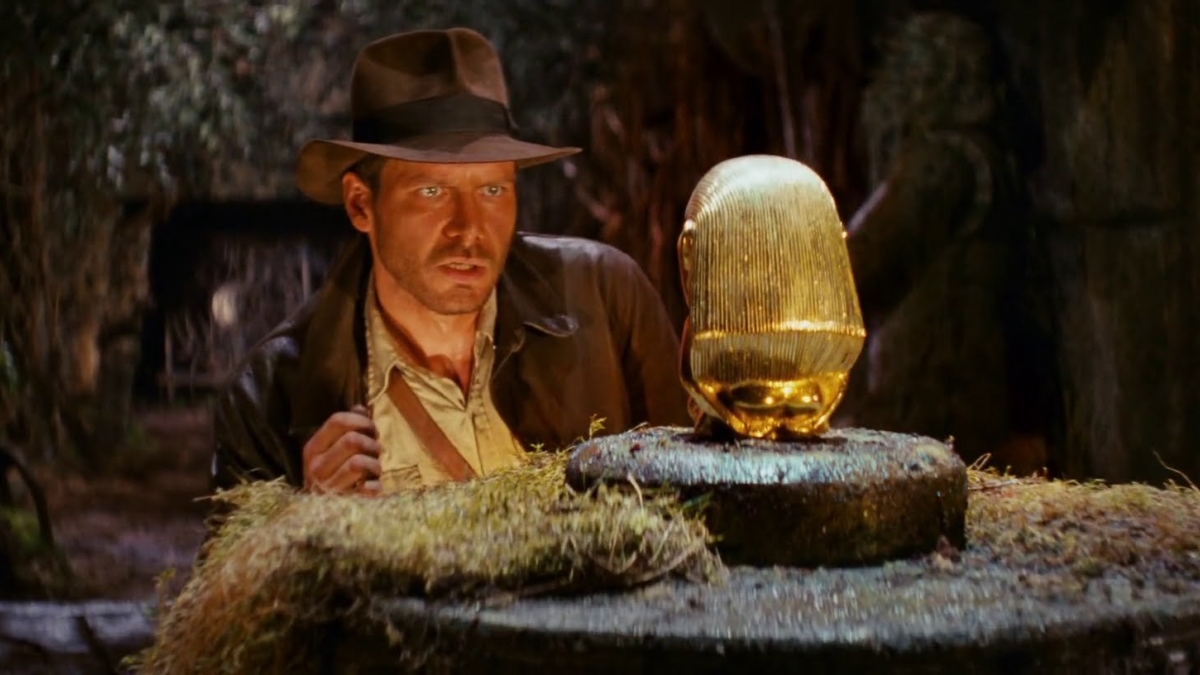It’s a disclaimer that echoes passionately through the lecture halls of every beginning archaeology course: It’s not like the Indiana Jones movies!
Inspiring a new generation of researchers to value and explore the past is Dr. Jones’ single contribution to the field. But for those who commit their time and expertise to the study of past humans, the iconic, whip-cracking rogue has become a major cliché.
That’s why we’ve gathered four real archaeologists from the School of Human Evolution and Social Change. "Raiders of the Lost Ark" premiered 37 years ago this week, and these experts are out to help dispel some of the myths that Harrison Ford's iconic character has ingrained so deeply in our minds.
Myth No. 1: The goal of archaeology is to find things to put in museums

Associate Professor Brenda Baker excavates at a dig site.
Associate Professor Brenda Baker: While stocking museums was a goal of antiquarians in the 19th and early 20th centuries, archaeologists have long been much more interested in the information they can obtain by documenting what past people left behind. Many of the most mundane artifacts, including trash like broken potsherds and bits of animal bone, tell us more about the way people lived than the items that are typically exhibited in museums.
Myth No. 2: Archaeologists mostly work alone, using nothing but a shovel and their wits

Associate Professor Christopher Morehart uses a flotation tank at his field site in Mexico for botanical analysis.
Associate Professor Christopher Morehart: Archaeologists work most effectively in teams, which involve a range of people — including professional archaeologists, specialists and students. One enormous change is that researchers are also increasingly collaborating with local communities. Modern archaeological methods go beyond excavation and use an advanced range of tools, including geological analyses, chemical analyses of stones and clays, the study of animal and plant remains, sophisticated remote sensing (ranging from things like satellite imagery, multi-spectral drone imagery, ground penetrating radar and LiDAR), GPS, total station mapping, and the chemical study of human remains to understand diet and biogeography.
Myth No. 3: Archaeology is all about fieldwork

Archaeologists spend a lot of time preparing for fieldwork and analyzing data after the fieldwork is over.
Baker: Fieldwork is only one component of a much longer process. Considerable background research takes place before even going into the field, such as using remote sensing to identify and locate sites. Then after a field season, there’s extensive lab work to process the data, analyze all the artifacts or skeletal remains, and synthesize the information for publication.
Myth No. 4: Artifacts are the only way to learn about ancient people’s lives

Professor Christopher Stojanowski takes notes at his field site in Niger.
Professor Christopher Stojanowski: I am a bioarchaeologist who studies skeletal remains, so I would say that the impact of people’s lives on their bodies is one of the better indicators of what the past was like for them. But beyond the physical, many archaeologists also study geological signatures and the overall pattern of human settlements on the landscape. There is a lot more to archaeology than just the stuff that people leave behind, and the reality is that the materials we find are only those made of things that preserve, which is a biased snapshot of the past right at the outset.
Myth No. 5: The past only matters to universities and treasure-hunters

Professor Kelly Knudson talks to a student in her Archaeological Chemistry Laboratory.
Professor Kelly Knudson: After we spend long hours doing tedious work in the field and laboratory, it's rewarding to learn about the everyday lives of people who lived hundreds or thousands of years ago. Archaeology is important to our present and future, and as archaeologists, it’s up to us to preserve and protect the past as our common heritage.
Top photo: Indiana Jones (Harrison Ford) doing some pretty bad archaeology in "Raiders of the lost Ark," which was released on June 12, 1981. Photo courtesy of Paramount Pictures
More Arts, humanities and education

Professor's acoustic research repurposed into relaxing listening sessions for all
Garth Paine, an expert in acoustic ecology, has spent years traveling the world to collect specialized audio recordings.He’s been to Costa Rica and to Ecuador as part of his research into innovative…

Filmmaker Spike Lee’s storytelling skills captivate audience at ASU event
Legendary filmmaker Spike Lee was this year’s distinguished speaker for the Delivering Democracy 2025 dialogue — a free event organized by Arizona State University’s Center for the Study of…

Grammy-winning producer Timbaland to headline ASU music industry conference
The Arizona State University Popular Music program’s Music Industry Career Conference is set to provide students with exposure to exciting career opportunities, music professionals and industry…


